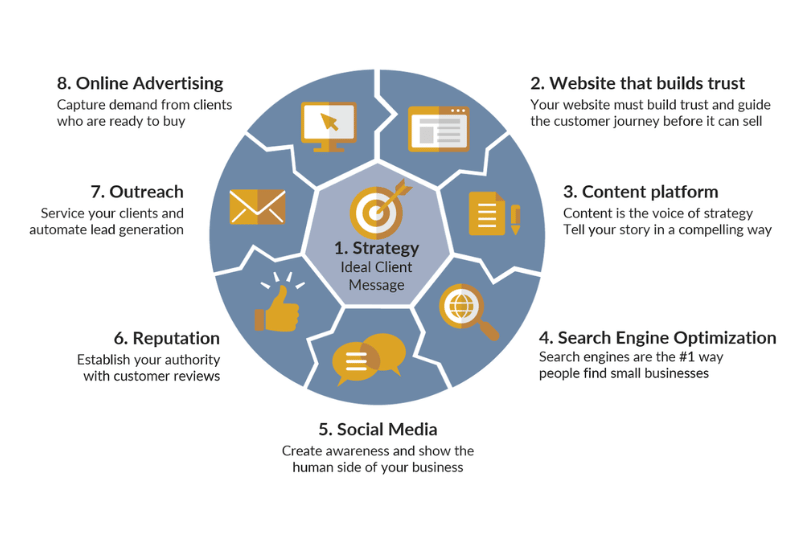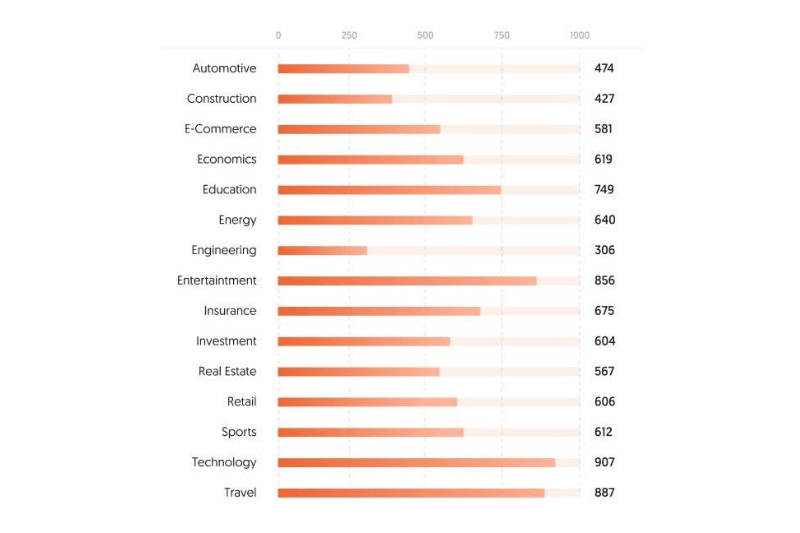
Why You Need To Have A Mobile Responsive Website

The cell phone is now in the hands of the general population, and approximately 2 million people have and rely on smartphones. These super-phones are used for more than just phone communication. The smartphone has recently become so inexpensive to maintain that many people are making the switch. Mobile browsing is extremely prominent and will only increase over time.
What this means for any business, no matter the size, is that if you don’t have a mobile friendly website, you’re likely losing business every day.
We live in a digitally mobile age, so not having a mobile friendly website harms your brand. It’s no longer an option to be optimized for mobile users; it is now more of a necessity. Here are more reasons to get up to speed with mobile responsiveness.
What Is a Mobile Responsive Website?
The pages of a mobile responsive website are those that have been reformatted to reproduce what visitors would see if they visited the site as desktop users. A good example of a responsive site is Dropbox. Its web page has a responsive UX design that alters mobile visitor behaviour when utilized on different screen sizes. It displays the website based on your device, taking the responsive design concept to the next level.

Why You Need a Mobile Responsive Website
Now that you know what responsive sites are, let’s take a closer look at why you should have one for your business.
Improved SEO
Google can provide the best search results for their users by tracking and penalizing websites and pages for certain things. One of the things they will penalize for is not being mobile friendly. This means if you’re not optimized for mobile, you can be pushed down the page of Google searches as your competitors rise to the top.
Google also tracks bounce rates and click backs. If you are getting a high bounce rate, this means that your users are leaving your webpage quickly after arriving there. If you are getting a low click back time, your users are quickly clicking back to the search results to find a different website that will satisfy their inquiry.
Both will negatively affect your SEO score and make your business more difficult to find in Google searches. Your users are very likely to either click back or bounce to a different site if they are searching your business on mobile and your site is not mobile friendly.
Improved User Experience
Simply put, a poor mobile website will reflect poorly on your brand. Give your customers and searchers a good experience, and they will remember that positively. Distorted images, text that is too small and pages that don’t fit the screen are all results of a website that is not mobile friendly. Any visitor attempting to navigate that will find it frustrating, and they will likely leave your site with a poor impression of your brand as a whole.
Give them a great mobile experience, and they will appreciate it! Whether they consciously realize it or not, they will enjoy spending time on a mobile site that works, and they will definitely notice a poor mobile site, which will leave a bad impression on your brand.
More On-the-Go Abilities
Those browsing on a handheld device are typically on the go and looking for something geographically relevant to where they are at the time of the search.
Whatever a mobile user searches for in the moment (for example, “coffee shop”), Google will automatically list the nearest coffee shops to where the search is made, using GPS. This list is the very first list of results on mobile.
No matter your business, you’ll want to be listed under this search result, and if you do not have a mobile friendly site, you will not be listed here. Being listed in the geographically relevant results list is an easy opportunity to drive customers to your business. If you’re currently not mobile friendly, you are easily missing out on this geographically relevant opportunity for local customers looking for you.
Stay Ahead of the Competition
So many businesses are up to speed and already have mobile responsive versions of their websites. If your website is not mobile friendly, your potential customer will quickly find a competitor of yours that is compatible with their handheld device and gravitate toward them.
Don’t give your competitors that advantage (or your customers the impression that you’re not up with the times), and make sure to optimize your website for mobile! You will notice results immediately as the internet has easy search and buying potential from anywhere at any time.
Designing a Mobile Website
Mobile devices vary in screen size and resolution, so you need to make sure you are designing a mobile website that is responsive and compatible with each screen size.
Choose a Responsive Web Design
To start designing a mobile website, you need to choose a template for your website that is compatible with mobile viewing. Many website builder platforms have templates you can choose from, like WordPress, Squarespace, Wix, and ThemeForest.
Increase Website Speed
The on-the-go mobile user also needs your website to load and respond quickly. Stats show that mobile users leave a page if it does not load in 3 seconds or less on average. Make sure your website is fast to keep your mobile users on it and prevent them from jumping to the next relevant search!
Design an Easy to Use Interface and Mobile Navigation
Easy mobile navigation is critical for mobile responsive websites. The website structure should be easily understood, and visitors should be able to follow through with their desired actions without any frustration.
When designing a mobile friendly website, the colours, themes, and backgrounds must be smoother and softer for a better user experience. And visitors should be met with a simple buying process with few distractions.
Boost Performance
Minimize the menu to boost the overall performance of a mobile friendly website. Hide the options in a menu bar and arrange everything, making it easily accessible without hurting the website's loading speed.
Include a Search Function
Adding a search function in any mobile responsive website is also a great idea and improves the mobile site's functionality. More than 30% of website visitors will utilize the search function on a website. It enhances the user experience, makes navigation easier, and increases conversion rates.
Consider an Appropriate Font and Size
The font you use, as well as its size, also play important roles in a mobile website design. The fonts should be small, attractive, and appropriate for the screen size. This enhances visibility and makes the site more user-friendly on different devices.

Mobile Friendly vs Mobile First Indexing
Did you know that Google uses the mobile version of a site’s content and crawls with the smartphone agent for indexing and ranking in the search engines? This is referred to as mobile first indexing.
With a mobile first design approach, the desktop site is designed starting with the mobile version of the site and is then changed to fit a larger screen size. This is the opposite approach of more traditional web design because developers usually start with the desktop version and then adapt to the mobile friendly design.
Is Your Website Mobile Friendly and Responsive?
To see if your website is mobile friendly, you can use Google PageSpeed Insights. This tool provides important data you can use. To check for the responsiveness of a locally hosted website, you can use the Toggle device toolbar option you will find in the developer tools area of the browser.
F12 is a shortcut you can use in Chrome and Firefox. Or you can open the site you want to test the responsiveness of in your Google Chrome tab and then right click on the landing page to open the menu. Click Inspect and then click on the toggle device toolbar.
Do you have any questions on the above, or would you like to share your experience? Just email ideas@mawazo.ca or call +1 (833) 503-0807.
At Mawazo Marketing we work with owners of B2B companies who want to accelerate their business. We help them with a concrete digital growth plan, a website that saves operational cost, and a digital marketing system that generates leads. For qualifying clients we offer a 5x ROI guarantee: if we don't reach the objective, then we pay back the difference. Book a Free Strategy Session to find out more.



Fractional CMO
Custom App Development
Web Hosting
Are you ready to generate leads?








